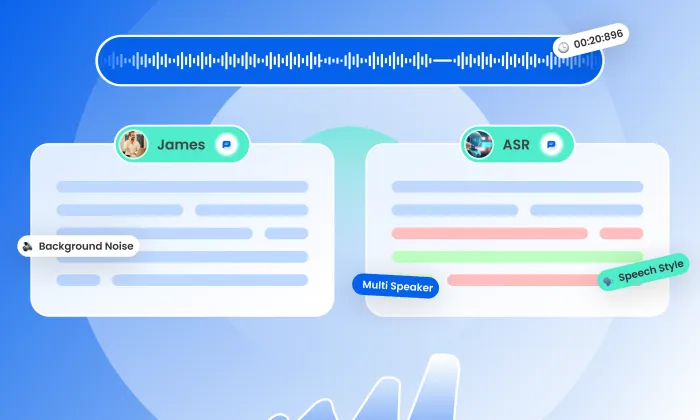What is the false acceptance rate in wake word detection?
Wake Word
Voice Assistants
Speech Recognition
In wake word detection systems, the False Acceptance Rate (FAR) is a critical metric that measures how often a system incorrectly identifies a non-trigger phrase as a valid wake word. Managing FAR effectively is essential to ensure voice-triggered assistants only activate when intended, thereby enhancing user experience, safeguarding security, and maintaining trust.
Why Low FAR Is Critical for Voice-Enabled Products
A low FAR contributes to the usability and safety of voice AI systems across multiple environments:
- User experience
- When a system activates only on intentional commands, users experience smooth, uninterrupted interaction. High FAR leads to frequent misfires, causing frustration and distrust.
- Security
- In contexts like smart homes or voice-controlled banking, unintentional activations could pose serious risks if unauthorized commands are executed.
- Performance benchmarking
- FAR provides a measurable indicator of system robustness and is often used to evaluate different models and tuning iterations.
How to Calculate and Interpret FAR
FAR is defined as:
FAR = Number of False Acceptances / Total Number of Non-Target Utterances
Where:
- False acceptances: The number of times a non-wake phrase triggers the system
- Non-target utterances: All inputs that should not cause activation
Example: If your model is tested against one thousand non-target utterances and thirty are falsely accepted, the FAR is three percent.
Proven Strategies to Minimize FAR in Wake Word Models
1. Diverse Training Data
Wake word systems trained on narrow datasets often generalize poorly. FutureBeeAI’s wake word detection datasets, covering over 100 languages and dialects, offer linguistic and environmental variety essential for minimizing false activations.
2. Data Augmentation
Introducing realistic acoustic variations through techniques like:
- Background noise injection
- Pitch and speed variation
- Room impulse response convolution
These augmentations help the model differentiate between similar-sounding inputs and actual wake words.
3. Threshold Tuning
Calibrate detection thresholds based on validation data to strike the right balance between FAR and the False Rejection Rate (FRR). Dynamic thresholding using confidence scores can also improve live system adaptability.
4. Robust Testing Framework
Deploy structured test sets across scenarios including:
- Quiet indoor settings
- Outdoor urban noise
- Multilingual environments
- Varying device types and distances
This ensures the system is evaluated across realistic and challenging conditions.
Leveraging FutureBeeAI’s Dataset Expertise
FutureBeeAI enables lower FAR through high-quality data and infrastructure:
- Off-the-shelf and custom datasets with diverse speaker profiles
- 16 kHz WAV format recordings in mono audio for model-ready integration
- YUGO platform for structured data collection and metadata tagging
- Two-layer QA ensuring annotation accuracy and SNR consistency
Case Insight: A client using our accent-stratified Hindi dataset achieved a 30 percent reduction in FAR compared to open-source datasets lacking demographic segmentation.
Real-World Use Cases
FAR optimization is critical across:
- Voice assistants ensuring only deliberate activations trigger actions
- Smart appliances where misfires can result in incorrect or unsafe operations
- Automotive voice control where false wake-ups can distract drivers or misinterpret commands
FAQs
Q: How is FAR measured in practice?
A: Run a controlled test with non-target utterances and calculate the percentage that causes unintended activation.
Q: How can FutureBeeAI support FAR reduction?
A: We provide multilingual, diverse, and QA-verified datasets that improve model training quality. Our YUGO platform also supports custom data collection for tuning thresholds more precisely.
Conclusion
Managing the False Acceptance Rate is fundamental to building safe and reliable voice AI systems. By using FutureBeeAI’s data solutions, AI engineers and product teams can train models that respond accurately to intended commands while minimizing spurious activations.
Contact us to explore our wake word datasets and elevate your system’s detection precision.
What Else Do People Ask?
Related AI Articles
Browse Matching Datasets
Acquiring high-quality AI datasets has never been easier!!!
Get in touch with our AI data expert now!








